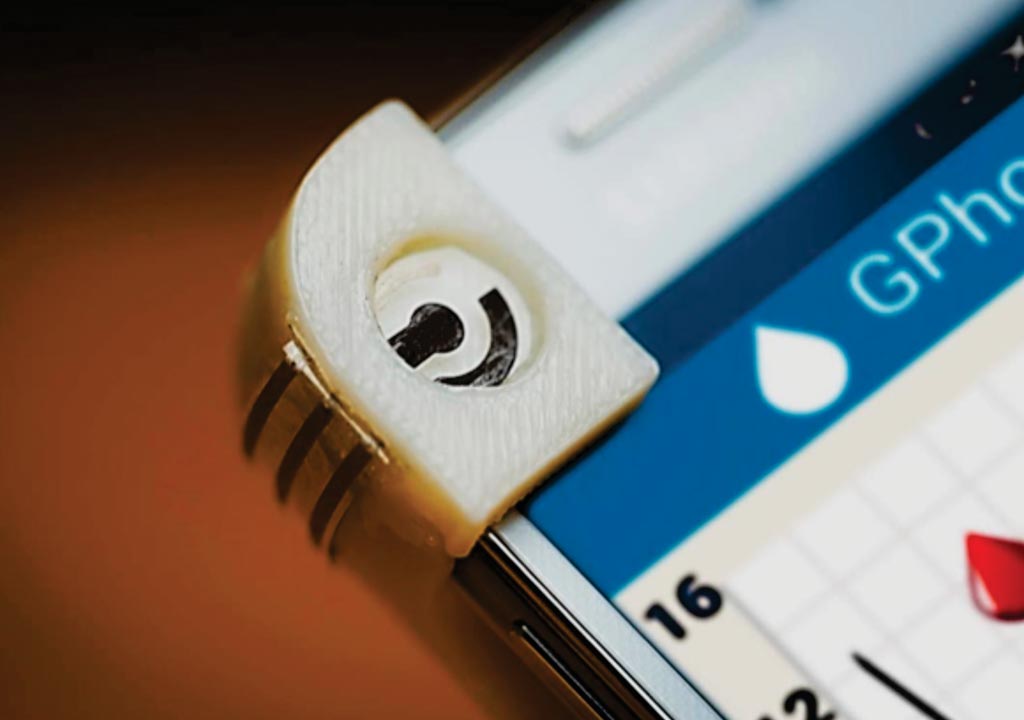Smartphone Case Offers Glucose Monitoring Regardless of Location
By LabMedica International staff writers
Posted on 20 Dec 2017
Currently, checking blood sugar levels can be a hassle for people with diabetes, especially when they have to pack their glucose monitoring kits around with them every time they leave the house.Posted on 20 Dec 2017
A smartphone case and application have been developed that could make it easier for patients to record and track their blood glucose readings, whether they are at home or on the go. In a proof of concept study the new smartphone-based can be used as a reusable glucose meter.

Image: The GPhone is a portable glucose sensing system integrated onto a smartphone (Photo courtesy of David Baillot/UC San Diego Jacobs School of Engineering).
Bioengineers at the University of California - San Diego (La Jolla, CA, USA) have developed a glucose meter that includes a custom-built smartphone case that houses a permanent bare sensor strip, a stylus that is loaded with enzyme-carbon composite pellets, and sensor instrumentation circuits. A custom-designed Android-based software application was developed to enable easy and clear display of measured glucose concentration.
The device called a GPhone and a typical test involves the user loading the software, using the stylus to dispense an enzymatic pellet on top of the bare sensor strip affixed to the case, and then introducing the sample. The electronic module then acquires and via Bluetooth wirelessly transmits the data to the application software to be displayed on the screen. The deployed pellet is then discarded to regain the fresh bare sensor surface.. The stylus holds enough pellets for 30 tests before it needs to be refilled. A printed circuit board enables the whole system to run off a smartphone battery.
The pellets contain an enzyme called glucose oxidase that reacts with glucose. This reaction generates an electrical signal that can be measured by the sensor's electrodes. The greater the signal, the higher the glucose concentration. The team tested the system on different solutions of known glucose concentrations. The test takes about 20 seconds and the results were accurate throughout multiple tests. The study revealed that the enzyme loaded in the pellets are stable for up to eight months at ambient conditions, and generate reproducible sensor signals.
Joseph Wang, DSc, a professor of Nanoengineering and a senior author of the study, said, “This system is versatile and can be easily modified to detect other substances for use in healthcare, environmental and defense applications.” The study was originally published online on October 17, 2017, in the journal Biosensors and Bioelectronics.
Related Links:
University of California - San Diego







 Analyzer.jpg)





